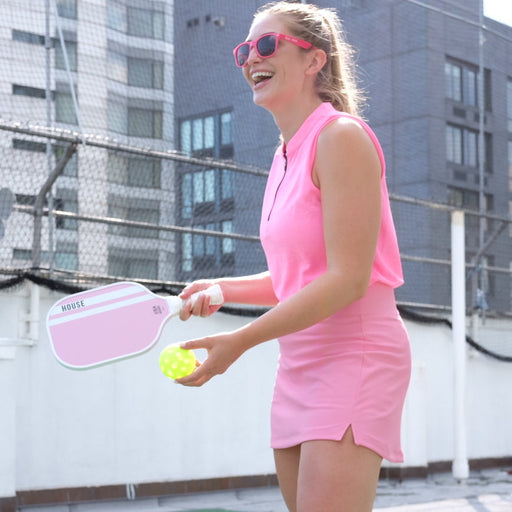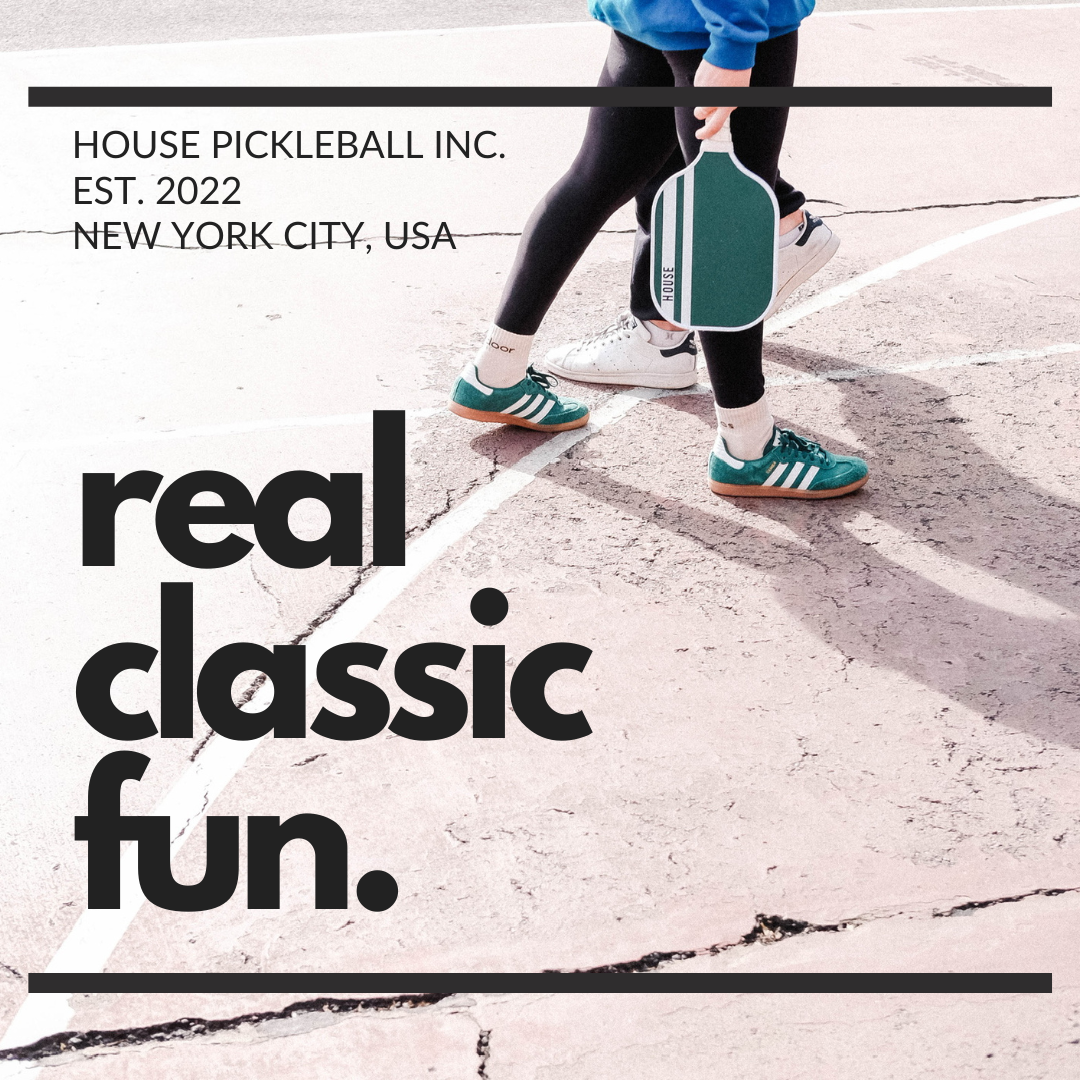
7 Helpful Tips To Choosing The Best Pickleball Paddle
Picking the perfect pickleball paddle might feel like navigating a maze, especially for newcomers to the game. We get it – the array of choices can leave your head spinning! But don't worry, because we've got your back with some expert tips.
Before you break the bank on a mountain of paddles, hoping to stumble upon 'the one,' take a breather and let our guide light the way.
So, say goodbye to confusion and wave hello to the solution for your "how do I choose a pickleball paddle?" puzzle. Let's jump right in!
How Do I Know What Pickleball Paddle To Use?
Okay, so the answer to this question lies within you!
Yes, before you go out searching for the best pickleball paddle, you first have to figure out what kind of a player you are and what your playstyle is.
But, another important thing is to search for pickleball paddles that are USAPA approved, meaning they have undergone rigorous testing to meet the standards set by the United States of America Pickleball Association (USAPA).
Here's how to get started!
1. Ask Your Pickleball Pals
When you're on the pickleball court, you're surrounded by fellow enthusiasts, each wielding their preferred paddles. Don't hesitate to reach out to them!
Ask if you can test-drive their paddles for a match or two. It's a budget-friendly way to uncover the paddle that syncs with your play style and grip size.
Once you've dipped your fingers in the paddle pond, it's time to scrutinize the material that makes up your paddle's face.
2. Choose The Best Paddle Facing Material
The face of your paddle matters – and it's dressed in different materials: fiberglass, carbon fiber, and graphite.
Here's the scoop on each:
Fiberglass Paddles
Fiberglass paddles, also called composite paddles, are all about finesse, focusing on accuracy rather than brute power. Crafted from a flexible composite material, these paddles give the ball a lively bounce upon impact.
You'll experience a powerful response as energy bounces back into your shots. Its flexibility amps up the power, though some players note it may be a tad less controlled.
Carbon Fiber Paddles
Carbon fiber's refined touch and consistent control make it a top choice for those seeking mastery on the court.
This stiff and robust option absorbs the pickleball's energy upon impact, distributing it evenly across the paddle's face.
As a result, you get a minimal deformation on contact, translating to superior control and spot-on shot precision. Much like the synergy in House Pickleball's bread and butter bundle, where a polypropylene honeycomb core meets a carbon fiber face.
Graphite Paddles
If handling and feel are your goals, graphite is the star of the show. With a lightweight yet stiff structure, graphite paddles spread ball energy uniformly across their surface.
The result? Great handling, reliable performance, and a consistent striking experience that appeals to players of all levels.
Hybrid Paddles
Imagine a paddle that strikes the perfect balance between power and control – that's the magic of hybrid paddles.
With a blend of the best materials, these paddles have an aerodynamic feel to them, precise gameplay, and even distribution of energy.
3. Choose The Best Pickleball Core

Surface material isn't the only thing that plays a role in searching for the best pickleball paddle – core material and thickness shape your game!
Think of the core as the paddle's heart, impacting how it performs. Most paddles come equipped with a polymer honeycomb core and such core comes in various degrees of hardness.
A tougher core acts like a sponge, absorbing energy for careful control. On the flip side, a softer core gives energy back to the ball, adding more power.
When it comes to power, Nomex steps onto the stage. It is a core material that's tough as nails, yet light as a feather.
Another material is polymer core which is the go-to choice for many because it brings together durability and flexibility in pickleball paddles.
As for the thickness, it will depend on how you play the game.
4. Figure Out Your Playstyle
Remember, the paddle core can outshine the facing's impact. And this is what influences your playstyle. But, your playstyle also influences what material you will choose. It is pretty simple -- here's what we mean!
Aggressive player? Opt for thinner polymer core paddles for your attacking technique.
If you love to have things under control, then choose thicker 16mm polymer core paddles that will grant you the precise touch.
Seeking a balanced path? Seek out polymer core paddles around 14mm for that sweet middle ground.
5. Choose The Perfect Grip Size
Getting the grip right is like finding Cinderella's slipper – it has to fit perfectly. Too small or too big, and you're in for discomfort that can mess with your court performance.
Start with your hand size. Larger hands might groove better with a roomier grip, offering players more control. If you have smaller hands, a snugger fit could bring comfort and nimbleness.
Play around with different grip sizes (remember to ask friends) until you discover the one that feels like an extension of your hand. With a grip in sync, your hold on the game will be firm and relaxed, just as it should be.
6. Choose The Ideal Pickleball Paddle Weight
This factor can swing your performance, affecting swing speed, power, and control – three big players in your game.
If you're always ready for lightning-fast moves, a lighter paddle is your sidekick. Its speed boost lets you zip around the court and react to your rivals' moves with lightning precision.
On the other hand, if your game revolves around earth-shaking shots and steadfast baseline domination, a hefty paddle could be your best shot. Its weight packs momentum, fueling your power and precision with every swing.
Again, your playstyle will determine what kind of paddle you need in terms of weight.
Our tip is to try different weights, feel the rhythm of your strokes, and discover the weight that harmonizes with your strengths.
7. Choose Your Shape To Elevate Your Game

Just when you thought we'd covered it all, there are a few more factors that play a role in finding your ultimate pickleball paddle.
Within the boundaries set by the rulebook (where total length and width can't surpass 24 inches, and paddle length is capped at 17 inches), different paddle shapes come into play:
- Standard Shape: 15 3/4″ x 7 7/8'' is classic and common, suits most players.
- Wide Body Shape: 16″ x 8'' is great for beginners, offering a bigger hitting area.
- Thin Body Shape: 16 1/2″ x 7 1/4″ boasts a creative and long design for finesse shots.
- Blade Shape: 17″ x 6 7/8″ is a perfect precision choice for skilled players.
Is There Really A Difference Between Pickleball Paddles?
Absolutely, there are distinct differences between pickleball paddles that can significantly impact your game. As you can see, paddle materials, shapes, weights, and grip sizes all come together to create a unique playing experience.
Some pickleball paddles prioritize power, others control, and some strike a balance between both.
As you become more experienced and develop your skills, you might also discover specific preferences that lead you to a paddle that feels just right.
How Do I Know If I Need A New Pickleball Paddle?
Knowing when it's time for a new pickleball paddle comes down to a few factors.
If you feel that your current paddle doesn't provide the control, power, or feel you desire, it might be worth exploring other options.
Also, if your paddle is showing signs of wear and tear – like cracks, chips, or worn-out edges – it's probably time for an upgrade. For both comfort and safety reasons.
And hey, if you're all about riding the latest trends or searching for that perfect splash of color to match your court persona, well, you might just need a new paddle for that too.
Who knows, the cute yet powerful House Barb Paddle could be your sassy game-changer!
Remember, as your skill level evolves, you might also find that your paddle needs change. Yep, that's what happens when you become a pro!
How Can You Tell If A Pickleball Paddle Is Bad?
At the very beginning of your pickleball journey, you may not be able to notice when your paddle is actually underperforming or simply becoming bad.
Pay attention to your performance. For example, if you notice a decrease in your play, inconsistent shots, or an uncomfortable feel during matches, your paddle might be to blame.
Paddles that are cracked, warped, or damaged can also negatively affect your game. So, don't forget to regularly inspect your paddle for any signs of wear.
Again, the best thing to do is test out different paddles and compare their performance to help you determine if your current paddle is indeed bad!
Final Thoughts
Similar to tennis, and any other racket sport, your paddle is your ultimate ally.
Armed with the know-how of grip size, weight, core and facing materials, and paddle shape, you're already on a good path to choosing the perfect pickleball paddle that fuels your game.
Remember, there's no one-size-fits-all, but with these tips, you're ready to step onto the court with confidence.
The choice is yours to make!














